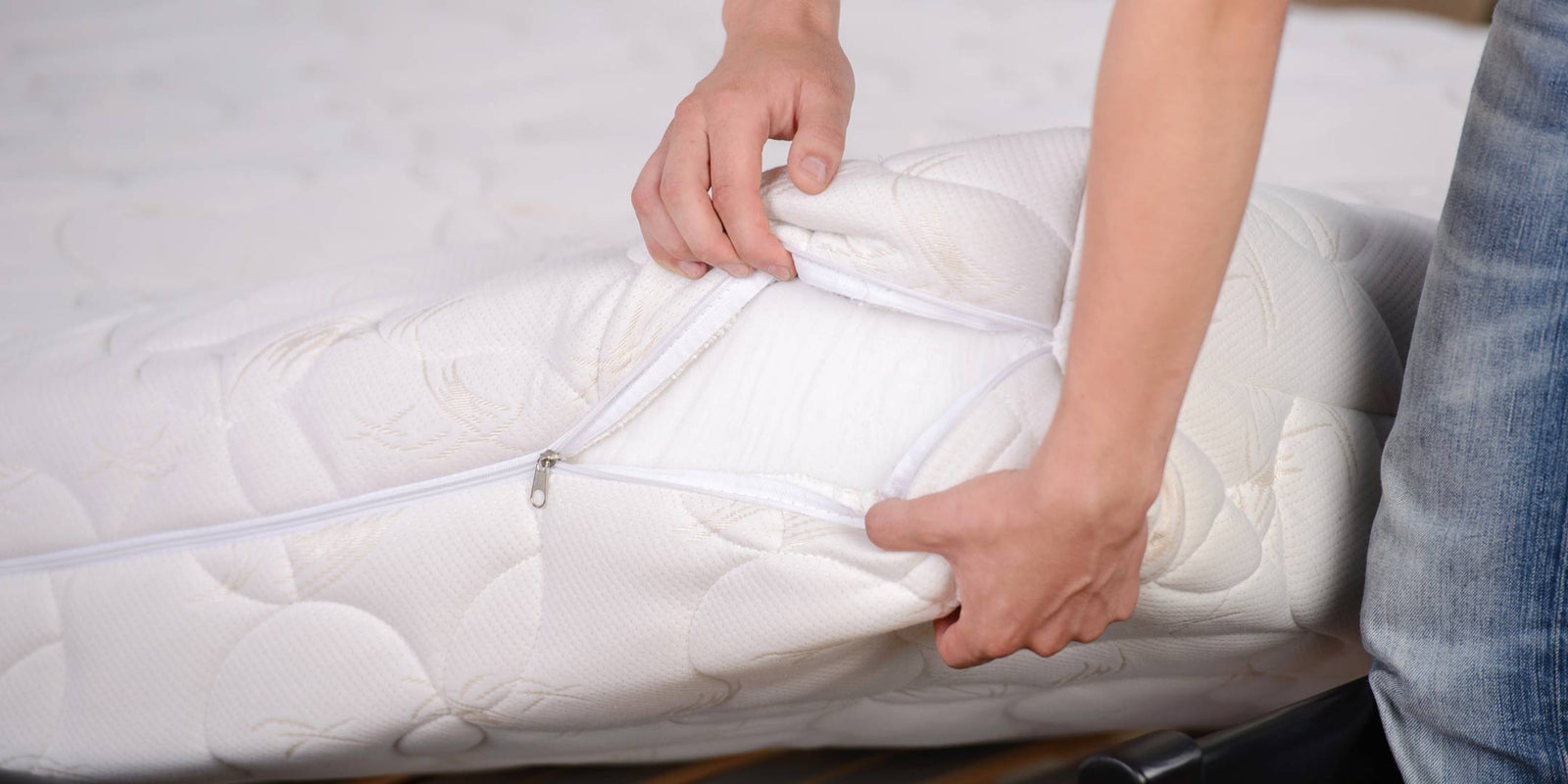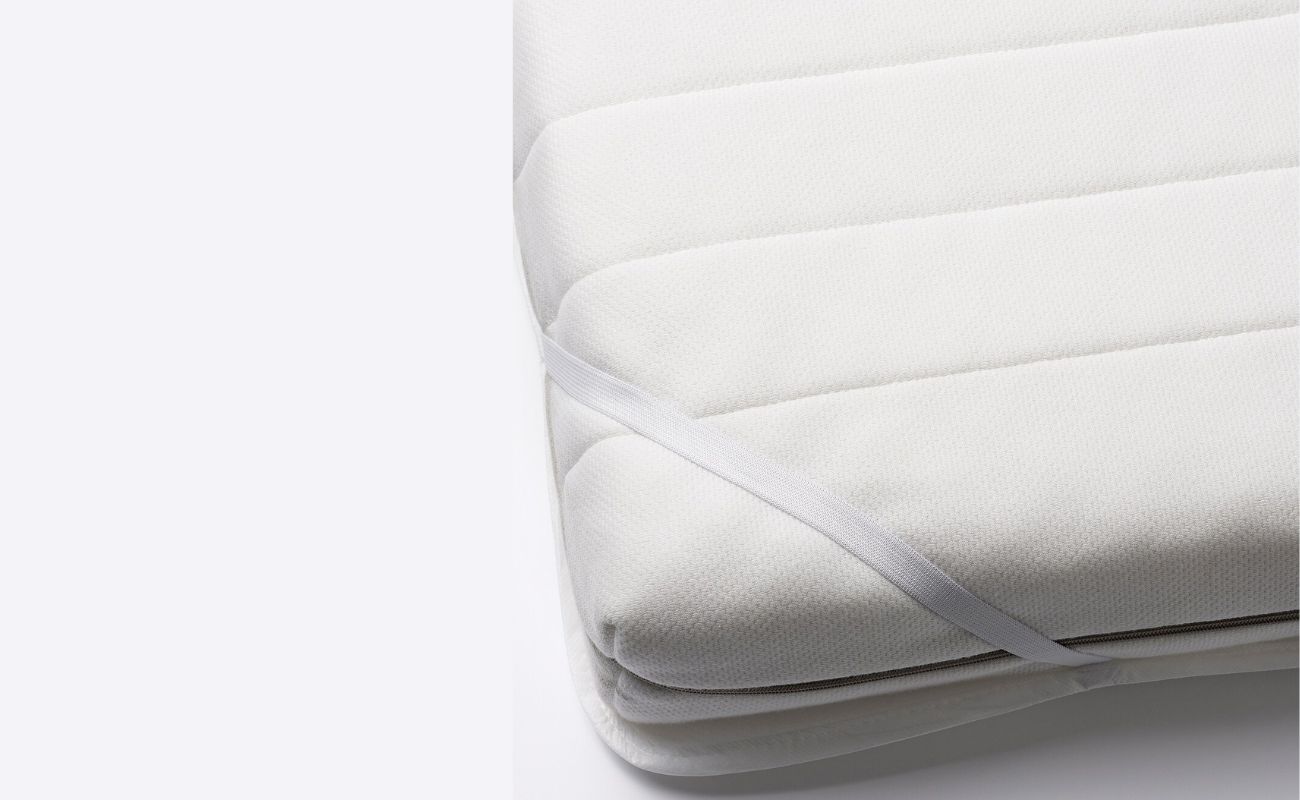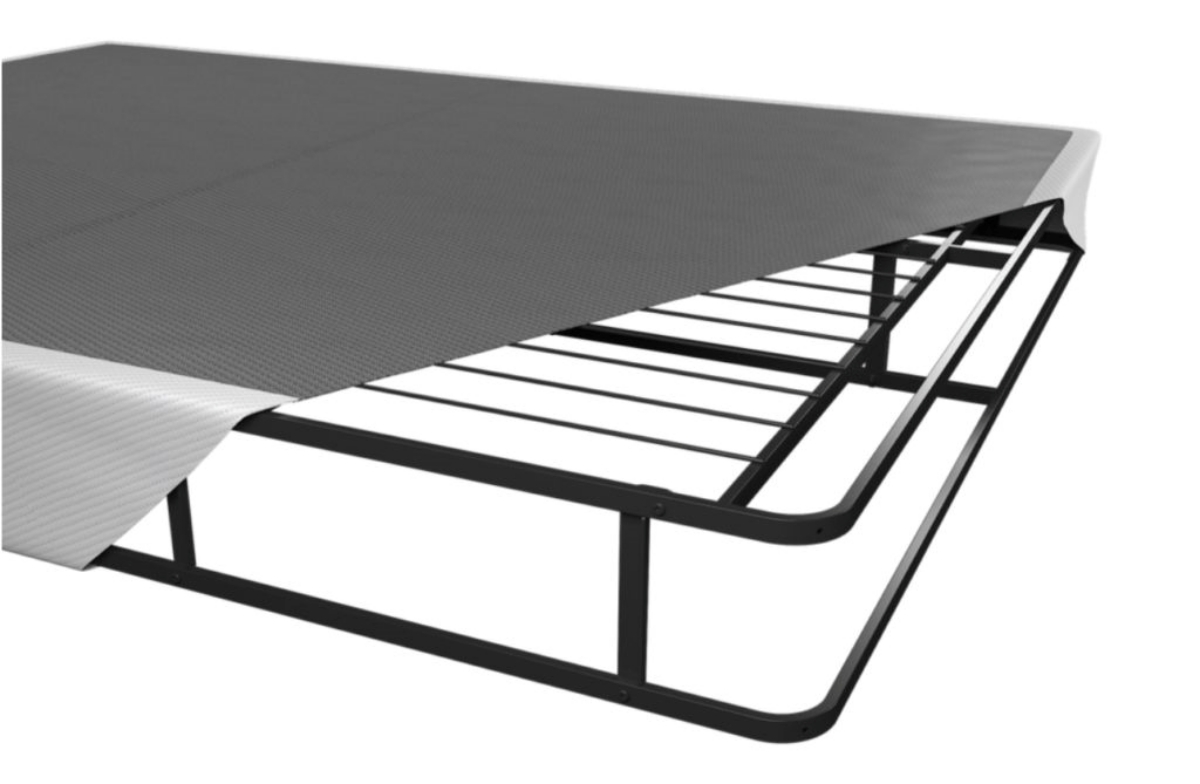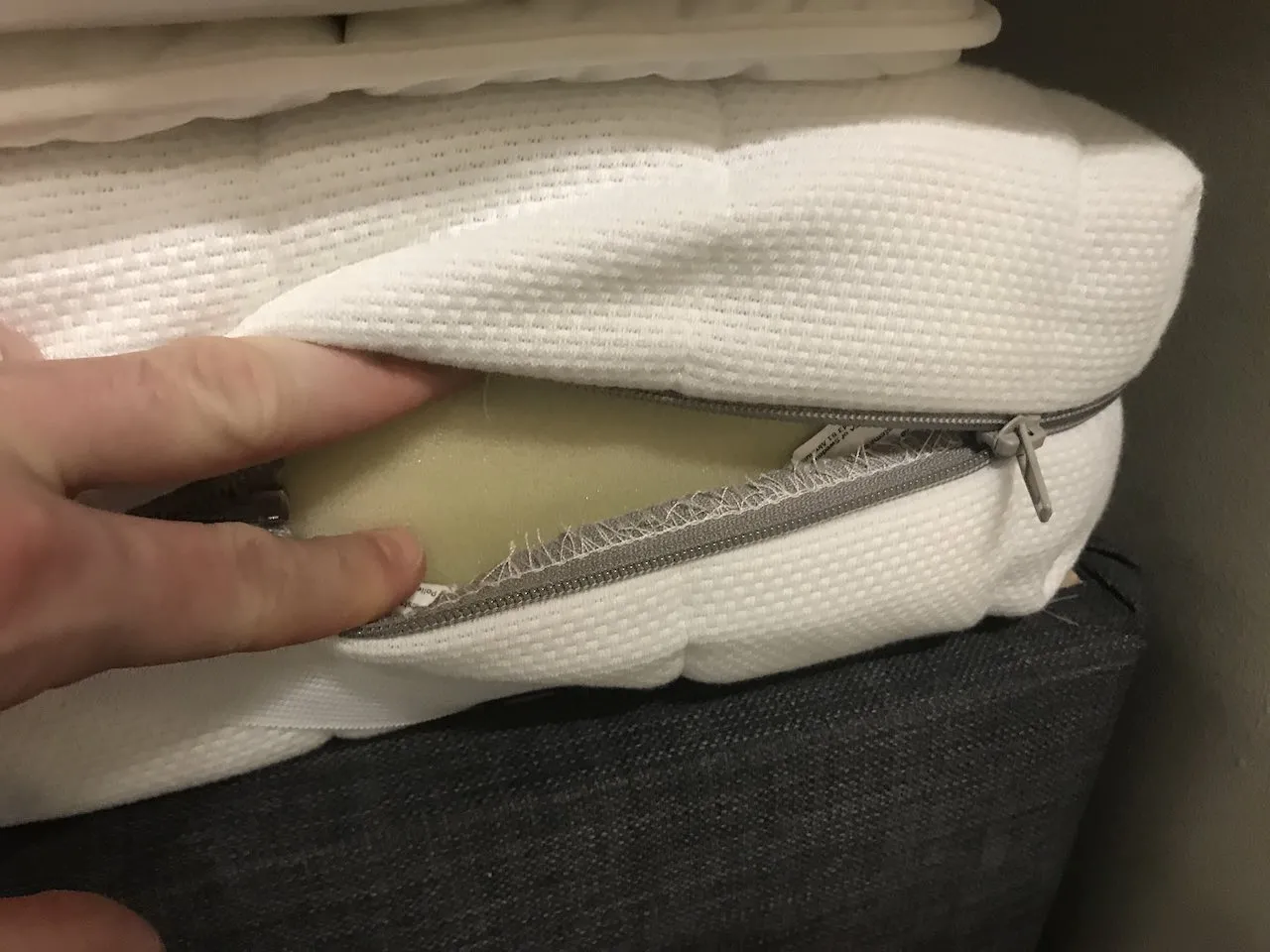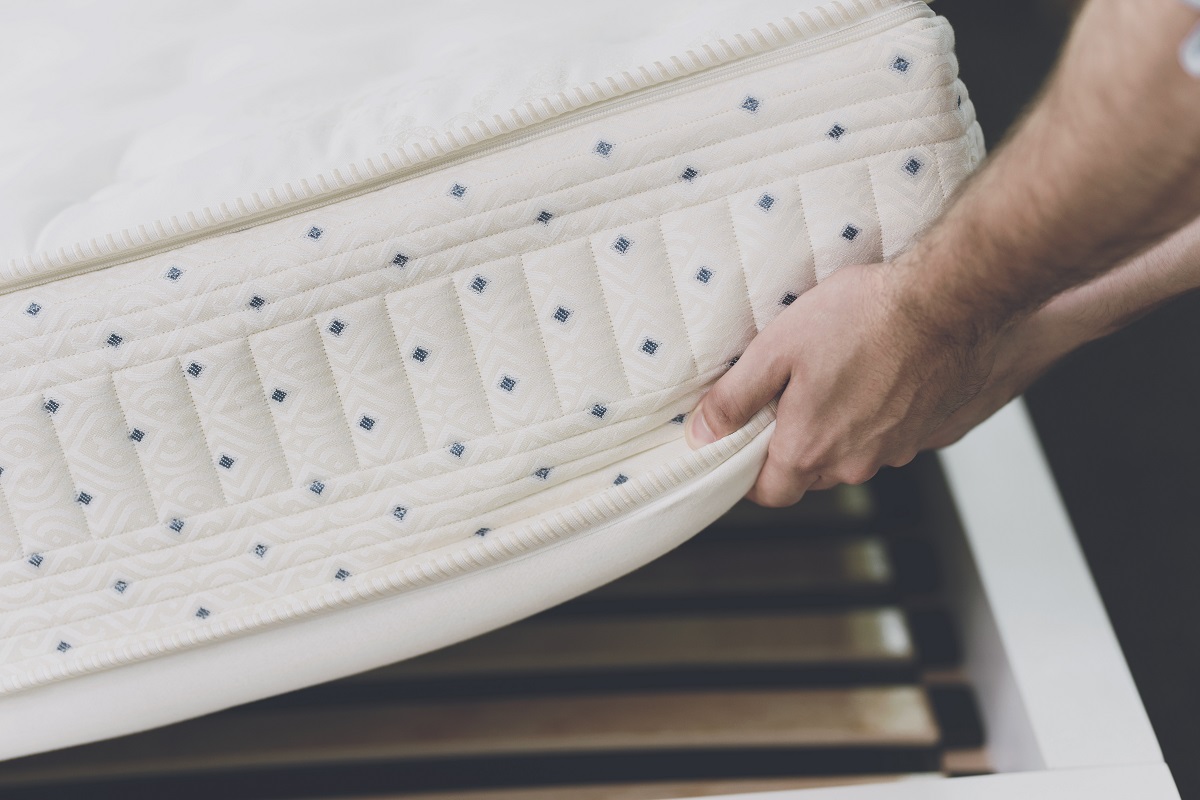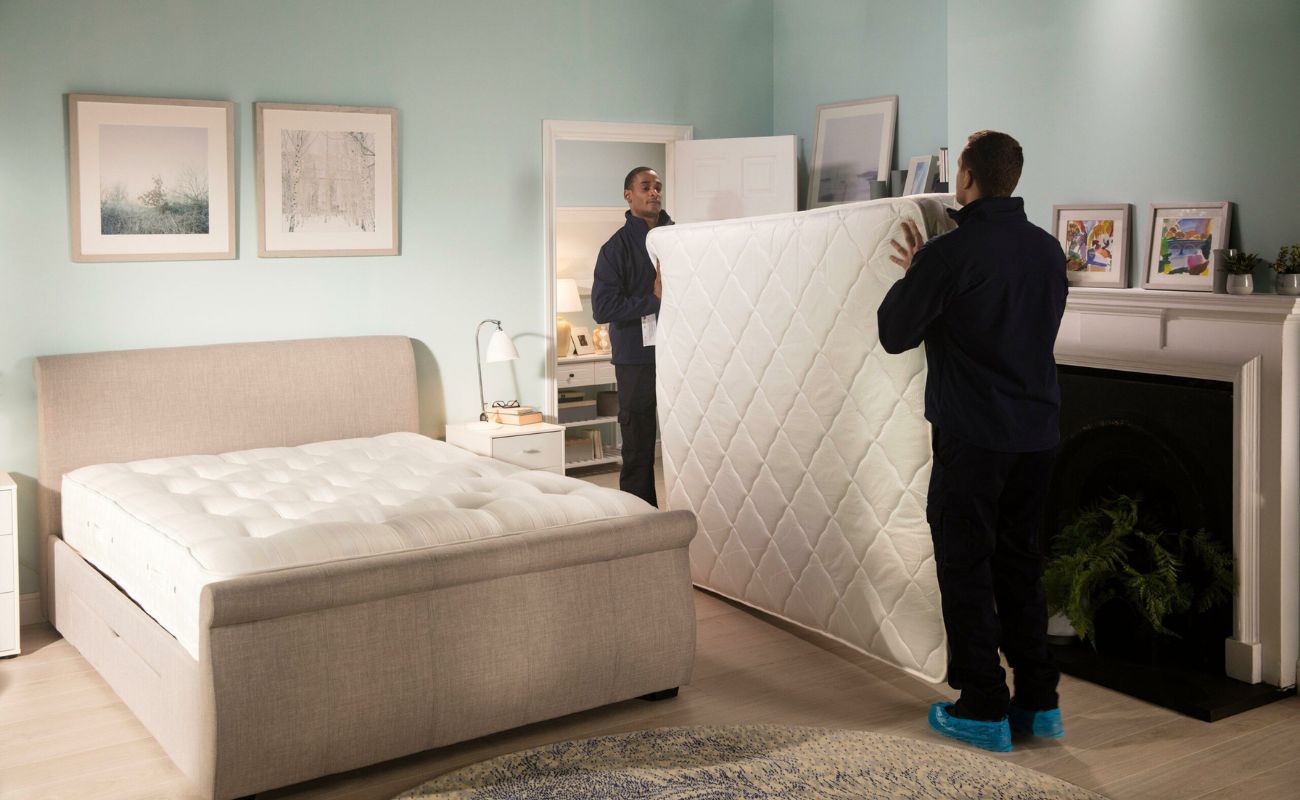Home>Furniture>Bedroom Furniture>How Often Should You Buy A New Mattress
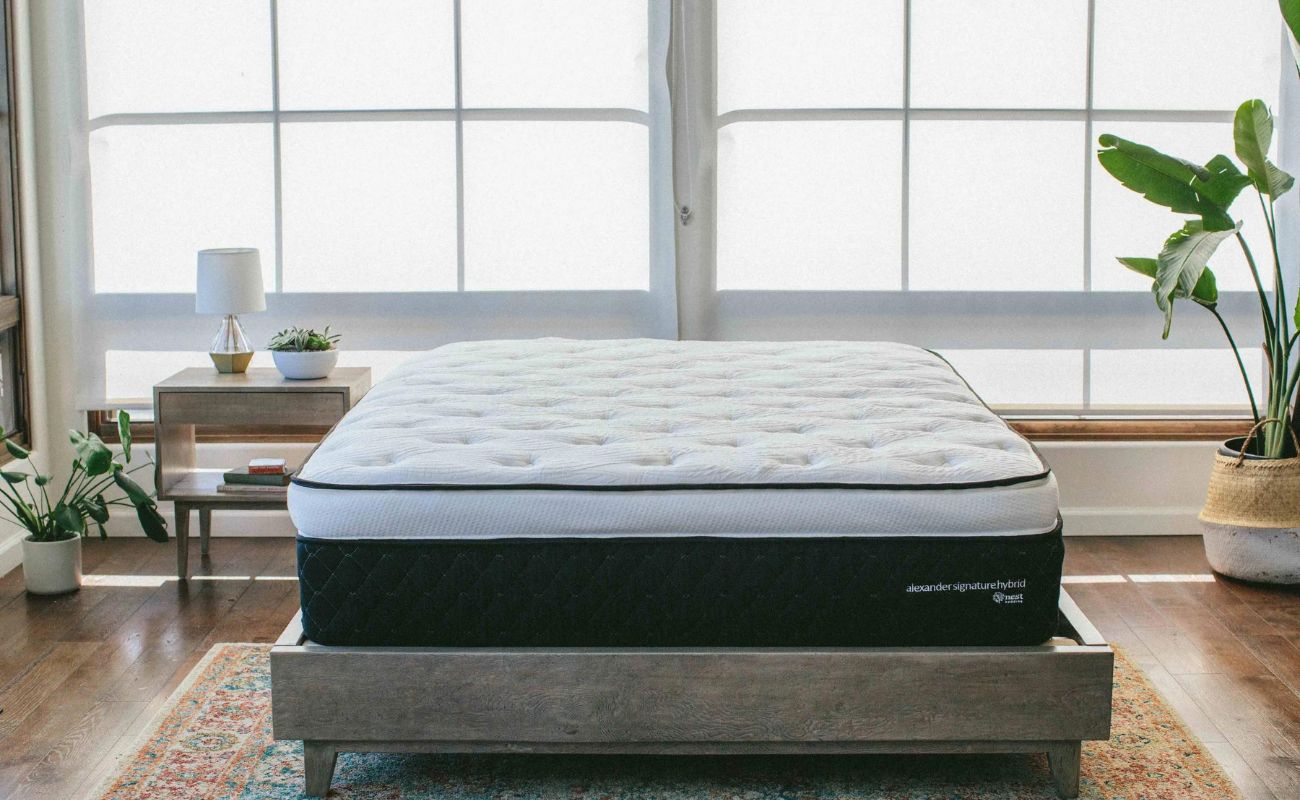

Bedroom Furniture
How Often Should You Buy A New Mattress
Modified: January 9, 2024
Discover the best practices for replacing your mattress and enhancing your sleep quality. Find expert advice on bedroom furniture and how often it should be renewed.
(Many of the links in this article redirect to a specific reviewed product. Your purchase of these products through affiliate links helps to generate commission for Storables.com, at no extra cost. Learn more)
Importance of a Good Mattress
A good night’s sleep is essential for overall health and well-being, and one of the key factors that contribute to a restful slumber is a comfortable mattress. Your choice of mattress can significantly impact the quality of your sleep, as well as your physical and mental health. Let’s explore why having a good mattress is so important.
1. Sleep Quality: The primary function of a mattress is to provide support and comfort while you sleep. A good mattress ensures proper spinal alignment and reduces pressure points, allowing you to sleep soundly through the night. It minimizes tossing and turning, promoting deeper, uninterrupted sleep, and waking up refreshed and energized.
2. Pain Relief: If you wake up with aches and pains, it may be a sign that your mattress is not providing adequate support. A quality mattress can alleviate common sleep-related discomforts, such as back, neck, and joint pain. It distributes your body weight evenly and conforms to your body’s natural contours, relieving pressure on sensitive areas.
3. Health and Wellness: Sleep plays a crucial role in maintaining a healthy immune system, enhancing cognitive function, and regulating mood. A good mattress promotes proper sleep hygiene and ensures you get the recommended 7-9 hours of sleep each night. It helps to reduce the risk of chronic conditions like obesity, diabetes, and cardiovascular diseases.
4. Partner Sleep: If you share your bed with a partner, a quality mattress can minimize motion transfer. This means that when one person moves or gets out of bed, the other person’s sleep is less likely to be disrupted. This is especially important if you or your partner is a restless sleeper.
5. Allergen Control: Dust mites, allergens, and other microscopic organisms can accumulate in older mattresses, triggering allergies and respiratory issues. Investing in a new mattress can help reduce the presence of these allergens, providing a cleaner and healthier sleep environment.
It’s evident that having a good mattress is crucial for your sleep quality, overall health, and well-being. If you’re experiencing any of the following signs, it may be time to consider replacing your mattress.
Key Takeaways:
- Regularly replacing your mattress every 7 to 10 years is crucial for optimal sleep quality, reduced pain, and enhanced allergen control, ensuring a comfortable and restful sleep experience.
- By investing in a high-quality mattress that aligns with your sleep preferences and following proper maintenance tips, you can prolong its lifespan and enjoy improved sleep quality, overall well-being, and long-term cost savings.
Read more: How Often Should You Rotate A Mattress?
Signs That You Need a New Mattress
Your mattress plays a vital role in ensuring a comfortable and restful sleep. Over time, mattresses can wear out and lose their support, affecting the quality of your sleep. If you’re experiencing any of the following signs, it may be a clear indication that you need to invest in a new mattress:
- Sagging: If you notice visible indentations or sagging in your mattress, it’s a sure sign that the support system has deteriorated. A sagging mattress can lead to poor spinal alignment and discomfort during sleep.
- Body Aches and Stiffness: Waking up with frequent body aches, stiffness, or soreness can be a result of an unsupportive mattress. A worn-out mattress fails to offer proper support, causing discomfort and muscle tension.
- Restless Sleep: If you find yourself tossing and turning throughout the night, unable to find a comfortable position, it could be an indication that your mattress is no longer providing the necessary comfort and pressure relief.
- Waking up Fatigued: Despite getting a full night’s sleep, if you consistently wake up feeling tired and lacking energy, it may be due to the poor quality of your mattress. A worn-out mattress can disrupt your sleep cycle, preventing you from reaching the deep and restorative stages of sleep.
- Visible Wear and Tear: Check for any visible signs of wear and tear on your mattress, such as frayed edges, lumps, or protruding springs. These signs indicate that the structural integrity of the mattress has been compromised.
- Noise and Motion Transfer: If your mattress creaks, squeaks, or makes noise when you move or change positions, it’s a sign of wear and tear in the support system. Additionally, if you feel excessive motion transfer when your partner moves, it could be a sign that your mattress is no longer adequately isolating movement.
- Allergies and Respiratory Issues: If you frequently wake up with allergy symptoms, such as sneezing, itching, or congestion, it might be due to allergens that have accumulated over time in your mattress. Replacing your mattress can provide a cleaner sleep environment.
Keep in mind that the lifespan of a mattress varies depending on the quality and materials used. However, if you’re experiencing any of the mentioned signs, it’s a good idea to consider investing in a new mattress to ensure you can enjoy quality sleep and wake up refreshed and rejuvenated.
Factors to Consider When Buying a New Mattress
Choosing the right mattress is crucial for a good night’s sleep and overall comfort. With so many options available, it’s important to consider several factors before making a purchase. Here are some key factors to keep in mind when buying a new mattress:
- Comfort: Comfort is subjective, so it’s essential to test different mattresses to find the one that suits your preferences. Whether you prefer a softer or firmer feel, make sure the mattress provides adequate support and pressure relief for your body.
- Support: A supportive mattress keeps your spine properly aligned, preventing back pain and discomfort. Look for a mattress that offers the right level of support for your sleeping position and body weight. Consider mattresses with pocketed coils, memory foam, or latex, as they are known for their excellent support.
- Materials: The type of materials used in a mattress can impact its comfort, durability, and breathability. Common mattress materials include memory foam, latex, innerspring, and hybrid. Each material has its own unique characteristics, so research and consider your personal preferences and needs.
- Size: The size of the mattress depends on your personal preference and the available space in your bedroom. Consider factors such as the number of sleepers, body size, and any specific space constraints. The most common sizes are twin, full, queen, king, and California king.
- Motion Isolation: If you share your bed with a partner, consider a mattress with excellent motion isolation to minimize disruptions caused by movement. Memory foam or latex mattresses are known for their superior motion isolation properties.
- Temperature Regulation: If you tend to sleep hot, look for mattresses with cooling features such as gel-infused memory foam or breathable materials. These can help dissipate heat and keep you comfortable throughout the night.
- Edge Support: Edge support is important if you like sitting or sleeping near the edge of the mattress. Look for mattresses with reinforced edges or foam encasements that provide stable and sturdy support.
- Price and Warranty: Set a budget before shopping for a mattress and consider the value for money. Check the warranty duration and coverage to ensure you are protected from manufacturing defects.
Keep in mind that finding the perfect mattress may require some time and research. Take advantage of mattress trials, read customer reviews, and seek advice from experts to make an informed decision. By considering these factors, you can increase your chances of selecting a mattress that meets your specific needs and provides a comfortable and restful sleep experience.
Frequency of Replacing a Mattress
One common question that arises when it comes to mattresses is how often they should be replaced. The lifespan of a mattress can vary depending on several factors, including mattress type, quality, and usage. While there may not be a set rule, here are some general guidelines to consider:
1. Average Lifespan: On average, a good quality mattress can last anywhere from 7 to 10 years. This timeframe can vary based on the type of mattress and how well it has been maintained.
2. Mattress Type: Different mattress materials have varying lifespans. Innerspring mattresses tend to have a shorter lifespan of around 7 years. Memory foam and latex mattresses often last longer, with an average lifespan of 8 to 10 years.
3. Usage: The amount of usage the mattress receives can impact its lifespan. A mattress used nightly will naturally wear down faster compared to one used occasionally in a guest room.
4. Changes in Sleep Needs: It’s also worth considering if your sleep needs have changed. If you’re experiencing discomfort, pain, or sleep disturbances that are not alleviated by the mattress, it may be time to consider a replacement, even if it’s before the average lifespan.
5. Signs of Deterioration: Pay attention to signs that indicate a deteriorating mattress. These can include sagging, lumps, visible wear and tear, or an increase in allergies or respiratory issues. If you’re experiencing any of these signs, it’s a clear indication that your mattress may need to be replaced.
6. Body Weight and Sleeping Position: Keep in mind that body weight and sleeping position can also affect the lifespan of a mattress. Heavier individuals and those who sleep on their stomachs or sides may experience faster mattress deterioration and may need to replace their mattress sooner.
Ultimately, it’s important to assess the condition of your mattress and consider the factors mentioned above. If you find that your mattress is no longer providing adequate support, comfort, or sleep quality, it’s likely time to start searching for a new one. Investing in a new mattress can greatly improve your sleep experience, ensuring you’re well-rested and ready to take on each day.
Average Lifespan of Different Mattress Types
When it comes to mattresses, not all types are created equal in terms of lifespan. The materials and construction of the mattress can greatly influence how long it will last. Here is a breakdown of the average lifespan for different mattress types:
1. Innerspring Mattress: Innerspring mattresses are constructed with a coil support system topped with layers of padding. These mattresses typically have an average lifespan of around 7 to 10 years. The durability of an innerspring mattress depends on the quality of the coils and the gauge thickness of the wire used.
2. Memory Foam Mattress: Memory foam mattresses are known for their contouring and pressure-relieving properties. On average, a well-maintained memory foam mattress can last around 8 to 12 years. Higher density foam tends to have better durability and longevity.
3. Latex Mattress: Latex mattresses are made from natural or synthetic latex foam. They are known for their resilience, support, and environmental friendliness. A high-quality latex mattress can last between 10 to 15 years or longer. Natural latex tends to be more durable than synthetic latex.
4. Hybrid Mattress: Hybrid mattresses combine the support of innerspring coils with the comfort of memory foam or latex layers. The lifespan of a hybrid mattress can range from 8 to 12 years. The durability depends on the quality of the materials used in the construction.
5. Airbed Mattress: Airbed mattresses use adjustable air chambers to customize firmness levels. The average lifespan of an airbed mattress can range from 8 to 10 years. Regular maintenance and replacing any worn-out parts can help prolong its life.
6. Pillow Top Mattress: Pillow top mattresses have an additional layer of soft padding stitched on top. The lifespan of a pillow top mattress can vary depending on its construction and quality. On average, it can last between 5 to 7 years. Keep in mind that the pillow top padding may compress or develop indentations over time, potentially reducing its comfort and support.
These are rough estimates of the average lifespans for different mattress types. However, it’s important to remember that individual experiences may vary based on factors such as usage, body weight, and proper maintenance. Regularly rotating a mattress, using a mattress protector, and following the manufacturer’s guidelines for care and maintenance can help extend its lifespan.
When considering a mattress purchase, it’s essential to take into account the expected lifespan of the mattress type and select a mattress that aligns with your comfort preferences and durability expectations. Investing in a high-quality mattress can ensure a comfortable sleep experience for years to come.
It is generally recommended to replace your mattress every 7-10 years, as this is the average lifespan of most mattresses. However, if you are experiencing discomfort or poor sleep quality, it may be time to consider replacing it sooner.
Read more: How Often Should You Change Mattress
Signs of a Deteriorating Mattress
A mattress plays a crucial role in providing a restful sleep and maintaining overall comfort. Over time, mattresses can deteriorate due to wear and tear, affecting their support and comfort levels. Here are some common signs that indicate a deteriorating mattress:
- Sagging: One of the most noticeable signs of a deteriorating mattress is sagging. If you observe visible indentations or sinking areas where you sleep, it’s a clear indication that the mattress is no longer providing proper support. Sagging can lead to uneven weight distribution, spinal misalignment, and discomfort.
- Lumps or Bumps: As a mattress ages, it may develop lumps or bumps in certain areas. These irregularities can be caused by the shifting or deforming of padding materials or the breakdown of internal support structures. Lumps and bumps can create discomfort and disrupt your sleep.
- Increased Allergies or Respiratory Issues: An aging mattress can accumulate allergens such as dust mites, dead skin cells, and pollen, leading to increased allergy symptoms or respiratory issues. If you notice an increase in sneezing, coughing, or congestion upon waking up, it may be a sign that your mattress needs to be replaced.
- Increased Pain or Discomfort: If you wake up with frequent body aches, stiffness, or discomfort that wasn’t present before, it may be due to a deteriorating mattress. A lack of support and cushioning can lead to increased pressure on certain areas of the body, causing pain or discomfort.
- Disturbed Sleep: When a mattress loses its ability to provide proper support and comfort, it can lead to more restless nights. You may find yourself tossing and turning, unable to find a comfortable position, or waking up frequently throughout the night. This can result in poor sleep quality and daytime fatigue.
- Noise and Movement: As mattresses age, they may develop squeaks, creaks, or other noises when you move or change positions. This can be a sign of worn-out springs or loose components. Additionally, a deteriorating mattress may transmit more motion from one side to another, causing disturbance if you share your bed with a partner.
- Visible Wear and Tear: Check for any visible signs of wear and tear on your mattress, such as frayed edges, tears, or exposed springs. These physical signs indicate that the structural integrity of the mattress has been compromised and it may no longer provide the necessary support and comfort.
If you notice any of these signs, it’s a clear indicator that your mattress is deteriorating and may need to be replaced. A good mattress is essential for quality sleep and overall well-being, so investing in a new mattress will ensure you can enjoy a comfortable and restorative sleep experience.
Benefits of Replacing Your Mattress Regularly
Replacing your mattress regularly is an important investment in your sleep quality and overall well-being. Here are several benefits you can experience by replacing your mattress regularly:
- Improved Sleep Quality: Over time, mattresses can lose their ability to provide adequate support and comfort. By replacing your mattress, you can enjoy improved sleep quality as you experience better spinal alignment and pressure relief. This can lead to more restful and rejuvenating sleep.
- Reduced Pain and Discomfort: A deteriorating mattress can cause or worsen body aches, stiffness, and discomfort. By replacing your mattress, you can alleviate pain and reduce discomfort by ensuring proper support and cushioning for your body. This can lead to improved physical well-being and a more comfortable sleep experience.
- Enhanced Allergen Control: Mattresses can accumulate allergens such as dust mites, pollen, and dead skin cells over time. This can trigger allergies and respiratory issues, leading to disrupted sleep. By replacing your mattress regularly, you can reduce the presence of these allergens and create a cleaner and healthier sleep environment.
- Better Sleep Hygiene: Regularly replacing your mattress is a part of maintaining good sleep hygiene. It is important to create a sleep environment that promotes cleanliness and comfort. By investing in a new mattress, you can ensure that you have a fresh and hygienic place to sleep, enhancing your overall sleep routine.
- Improved Partner Sleep: If you share your bed with a partner, replacing your mattress regularly can lead to improved partner sleep. As mattresses age, they may not provide sufficient motion isolation, resulting in disturbance from one person’s movements to the other. By replacing the mattress, you can minimize motion transfer and create a more peaceful sleep space for you and your partner.
- Enhanced Mood and Mental Well-being: Quality sleep has a significant impact on mood and mental well-being. By replacing your mattress and enjoying better sleep, you may experience improved mood and mental clarity. Adequate rest can help reduce stress, anxiety, and enhance overall mental health.
- Long-term Cost Savings: While purchasing a new mattress is an investment, regular replacement can save you money in the long run. By avoiding the costs associated with treating sleep-related issues, such as chronic pain or allergies, you can potentially save on medical bills and expenses related to poor sleep health.
- Improved Longevity of the Mattress: Regularly replacing your mattress ensures that you are not overstressing the mattress beyond its intended lifespan. This can help prolong the longevity of the mattress, preventing premature wear and ensuring that you can enjoy its benefits for a longer period.
Considering these numerous benefits, it is clear that replacing your mattress regularly is essential for optimal sleep health and overall comfort. By investing in a new mattress, you can improve sleep quality, alleviate pain and discomfort, and create a clean and supportive sleep environment.
Tips for Maintaining and Prolonging the Life of Your Mattress
A mattress is a significant investment, and taking proper care of it can help prolong its lifespan and maintain its comfort. Here are some essential tips for maintaining and prolonging the life of your mattress:
- Use a Protective Mattress Cover: A mattress cover acts as a barrier against spills, stains, dirt, and dust. It helps protect your mattress from liquid damage and prevents allergens from accumulating. Be sure to choose a waterproof and breathable cover that is easy to clean and maintain.
- Rotate and Flip Your Mattress: Regularly rotating and flipping your mattress can help distribute the wear more evenly. This prevents excessive sagging and indentations in specific areas. Check the manufacturer’s guidelines for the recommended rotation schedule based on your mattress type.
- Keep the Mattress Clean: Regularly vacuum your mattress to remove dust, dirt, and allergens. If there are any spills or stains, spot clean them immediately using a mild detergent and warm water. Avoid saturating the mattress and allow it to dry completely before putting bedding back on.
- Use Supportive Bed Foundation: Ensure that your mattress is placed on a supportive and appropriate bed foundation. This can be a box spring, platform bed, or adjustable base. A proper foundation provides the necessary support and allows the mattress to maintain its shape and integrity.
- Avoid Sitting on the Edges: Sitting on the edges of your mattress regularly can cause the edges to sag or lose support over time. To maintain the mattress’s structure, avoid sitting on the edges and use chairs or other furniture for sitting purposes.
- Don’t Allow Pets on Your Mattress: While cuddling with your furry friends may be tempting, pets can introduce dirt, bacteria, and allergens to your mattress. Keep pets off your mattress to maintain its cleanliness and hygiene.
- Follow Weight Limit Guidelines: Every mattress has a weight limit specified by the manufacturer. Be mindful of this limit to prevent excess strain and premature wear on the mattress. If you or your sleep partner exceeds the weight limit, consider investing in a mattress specifically designed for heavier individuals.
- Avoid Jumping on the Mattress: Jumping or bouncing on the mattress can cause stress and damage to the internal components. Limit any excessive movement on the mattress to maintain its longevity.
- Properly Handle and Transport: When moving or transporting your mattress, be careful to avoid bending, folding, or stuffing it into tight spaces. Follow the manufacturer’s guidelines for safe handling and transportation to prevent damage.
By following these tips, you can ensure proper maintenance and care of your mattress, prolonging its lifespan and ensuring optimal comfort. Remember to consult the manufacturer’s instructions and guidelines specific to your mattress for any additional care recommendations. With proper care, your mattress can continue to provide you with a restful and comfortable sleep for years to come.
Conclusion
A good mattress is essential for quality sleep, comfort, and overall well-being. Understanding the importance of a good mattress, along with recognizing the signs of a deteriorating one, can help you make informed decisions about when to replace your mattress. By considering factors such as comfort, support, materials, and size, you can choose a mattress that suits your specific needs and preferences.
Regularly replacing your mattress offers numerous benefits, including improved sleep quality, reduced pain and discomfort, enhanced allergen control, and better partner sleep. It is recommended to replace your mattress every 7 to 10 years, although it may vary depending on the type of mattress and usage.
When it’s time to replace your mattress, invest in a high-quality option that aligns with your sleep preferences and requirements. By doing so, you can enjoy the maximum benefits of a supportive and comfortable sleep surface. Additionally, following proper maintenance tips such as using a mattress cover, regularly rotating the mattress, and keeping it clean can help prolong its lifespan.
Remember, a good night’s sleep is crucial for your physical and mental well-being. By prioritizing the quality and condition of your mattress, you are taking an important step towards improving your sleep health and overall quality of life.
So, don’t wait for the signs of discomfort and deterioration to become unbearable. Assess your mattress, consider its age and condition, and take action to provide yourself with the restful sleep you deserve. Your body will thank you, and you’ll wake up feeling refreshed, rejuvenated, and ready to conquer the day.
Frequently Asked Questions about How Often Should You Buy A New Mattress
Was this page helpful?
At Storables.com, we guarantee accurate and reliable information. Our content, validated by Expert Board Contributors, is crafted following stringent Editorial Policies. We're committed to providing you with well-researched, expert-backed insights for all your informational needs.

